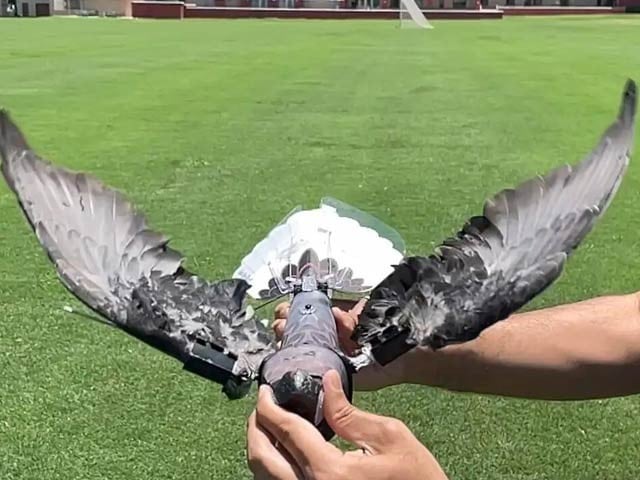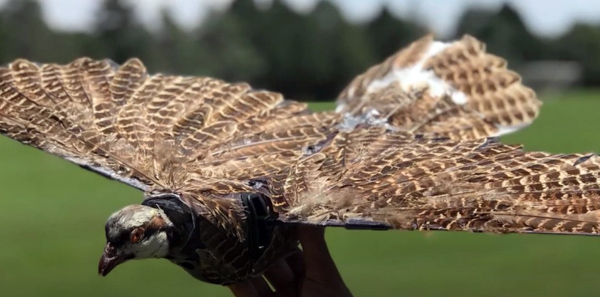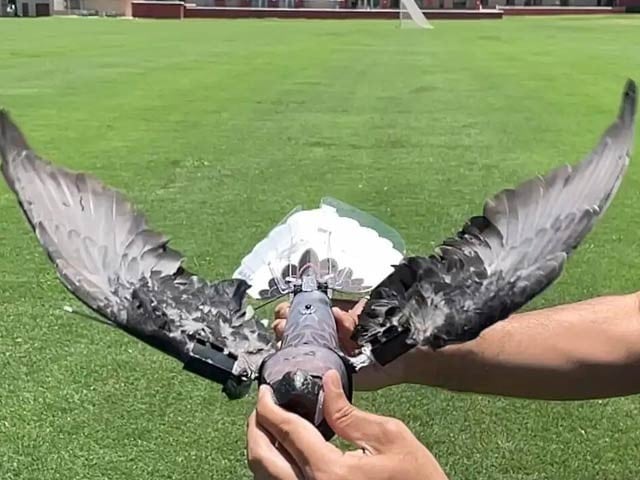
Dr. Mustafa Hasan Ilyan of the New Mexico University of Technology has molded the bodies of real birds into real flying Panchi drones. Photo: Courtesy of The Sun website
New Mexico: Engineers have built flying drones from the remains of original birds, but they still need to be improved.
Drones that fly like birds are being worked on all over the world, but to give these drones a real color, Mustafa Hasan Aliyan, associated with an organization called New Mexico Tech, suggested that why not make drones from the bodies of dead birds.
For this they took some embalmed birds and took out the remains inside them. Then, by installing electric devices and motors inside it, they have made bird-like drones with flapping wings. In these drones, the pigeon flies exactly like a pigeon and the bird flies exactly like a bird because most of it is made up of a real feathered bird.

Experts hope that such drones can be incorporated into flocks of similar birds to monitor the environment and wildlife. In addition, a whole new breed of spy drones could be created closer to birds. On this occasion, Mustafa Hasan Ilyan has said that ‘we have used dead birds instead of synthetic materials and made drones from them thanks to re-engineering.’
When these drones fly in the air, they actually look like birds and a short video of it can also be seen. Mustafa himself has admitted that despite all efforts, these drones can only fly for a short distance. It should be noted that they have been working on animal-like drones for a long time, including aquatic drones.
(function(d, s, id){
var js, fjs = d.getElementsByTagName(s)[0];
if (d.getElementById(id)) {return;}
js = d.createElement(s); js.id = id;
js.src = “//connect.facebook.net/en_US/sdk.js#xfbml=1&version=v2.3&appId=770767426360150”;
fjs.parentNode.insertBefore(js, fjs);
}(document, ‘script’, ‘facebook-jssdk’));
(function(d, s, id) {
var js, fjs = d.getElementsByTagName(s)[0];
if (d.getElementById(id)) return;
js = d.createElement(s); js.id = id;
js.src = “//connect.facebook.net/en_GB/sdk.js#xfbml=1&version=v2.7”;
fjs.parentNode.insertBefore(js, fjs);
}(document, ‘script’, ‘facebook-jssdk’));



